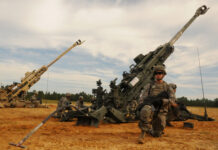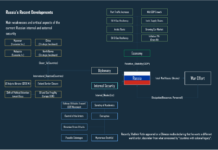The world’s coast guards are a motley crew, whose missions, authorities, and responsibilities vary greatly by country. Some nations have a single maritime service with both coast guard and naval responsibilities; others have a separate coast guard. Separate coast guards can be military services (or not), and may or may not have law-enforcement authorities.
They are overseen by various ministries or departments, and their institutional relationships with other government agencies, including naval forces, vary greatly. Mostly, what they have in common is authority for handling some subset of a broad range of maritime missions. Iconic missions include helping to prevent, mitigate, and responding to incidents and disasters at sea. Many coast guards contribute to safe maritime movements through regulation, inspections, and other oversight, as well as providing aids to navigation and addressing hazards, such as ice. They are often called upon to counter illegal fishing, piracy, smuggling, and a range of other illicit activities. Some protect civilian and/or defence assets frompossible attack, while many have responsibilities for pollution prevention and response.

Regardless of their precise missions, most coast guards face an array of emerging challenges, some of which also entail opportunities. These include the use of various technologies, changing environmental conditions, the expanding scale of illegal fishing, evolving maritime movements of drugs, increasing maritime migration, increasing overall levels of maritime activity, continuing maritime insurgencies, piracy and terrorism, an increasingly strained geopolitical situation, and decreasing pools of recruits. Below, we discuss each of these in turn, before drawing some overarching conclusions.
Expanding Use of Technologies
Several broad types of technologies are becoming increasingly available to both the legitimate maritime actors that coast guards regulate and to malefactors. One of the most important of these is the use of uncrewed vehicles. They are already used for logistics and inspection by the oil and gas industries; sending an uncrewed aerial vehicle (UAV), uncrewed surface vehicle (USV), or uncrewed undersea vehicle (UUV) to a remote location can be far less expensive than sending a vehicle designed to protect and support humans. The absence of a need to support humans increases the amount of payload that the vehicle can deliver, while eliminating human-induced limitations on vehicle endurance.
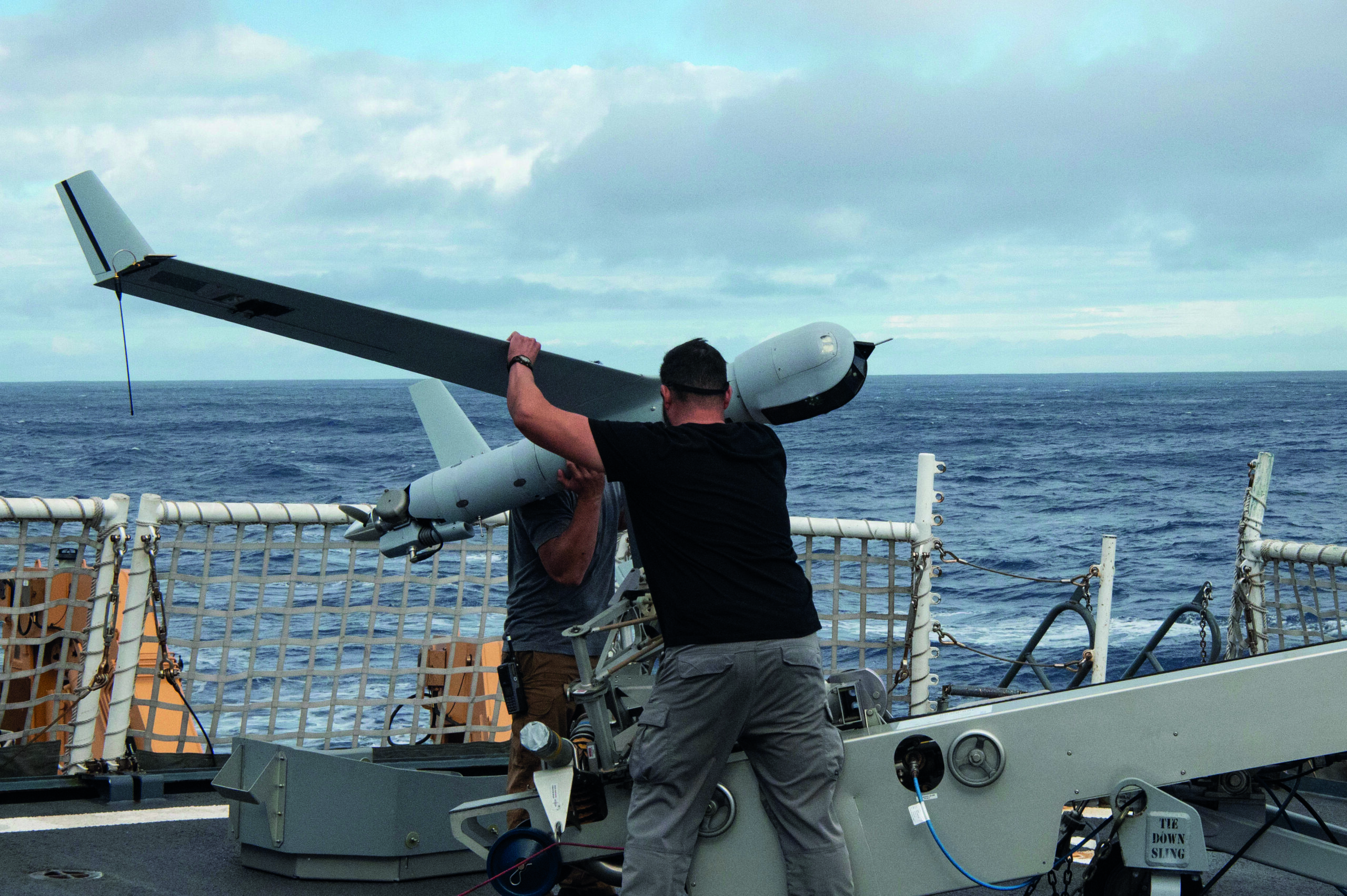
The capabilities of uncrewed vehicles are greatly enhanced by three related areas of technological development. The first entails improvements in autonomy. While many uncrewed vehicles remain remotely controlled or restricted to simple behaviours, over the next couple of decades, increasingly capable autonomy will enable vehicles to undertake complex missions without human direction. This is particularly valuable in situations where communications are attenuated, such as in the undersea environment. A second development involves rapid improvements in sensors, which are becoming smaller, less expensive, lighter, more durable, and more perceptive. The third key development is artificial intelligence, which can make sense of the masses of data that uncrewed vehicles’ sensors collect, transmuting it into useful information for human consumption.
Coast guards will increasingly need to regulate maritime operators employing uncrewed vehicles. For example, while uncrewed cargo ships are not yet in use, they likely will be when there is a sufficient level of trust in the technology, given potential cost savings. Coast guards will face the challenge of communicating with them and influencing their behaviours: there will be no human crew that can be directed to divert the ship’s course or accommodate a boarding. [1]
Unfortunately, criminals or violent extremists can also use uncrewed vehicles in a variety of nefarious ways. They can be used to smuggle goods: a UUV or low-profile USV laden with drugs can be hard to detect and interdict. Even if it is captured, attribution may be difficult, and the absence of a person aboard eliminates the possibility of an individual providing copious intelligence in return for leniency. UAVs can be used to spy on law enforcement, to create distractions, or to deliberately interfere with operations. Explosive-laden uncrewed vehicles can be used with devastating effect against ships or maritime infrastructure.
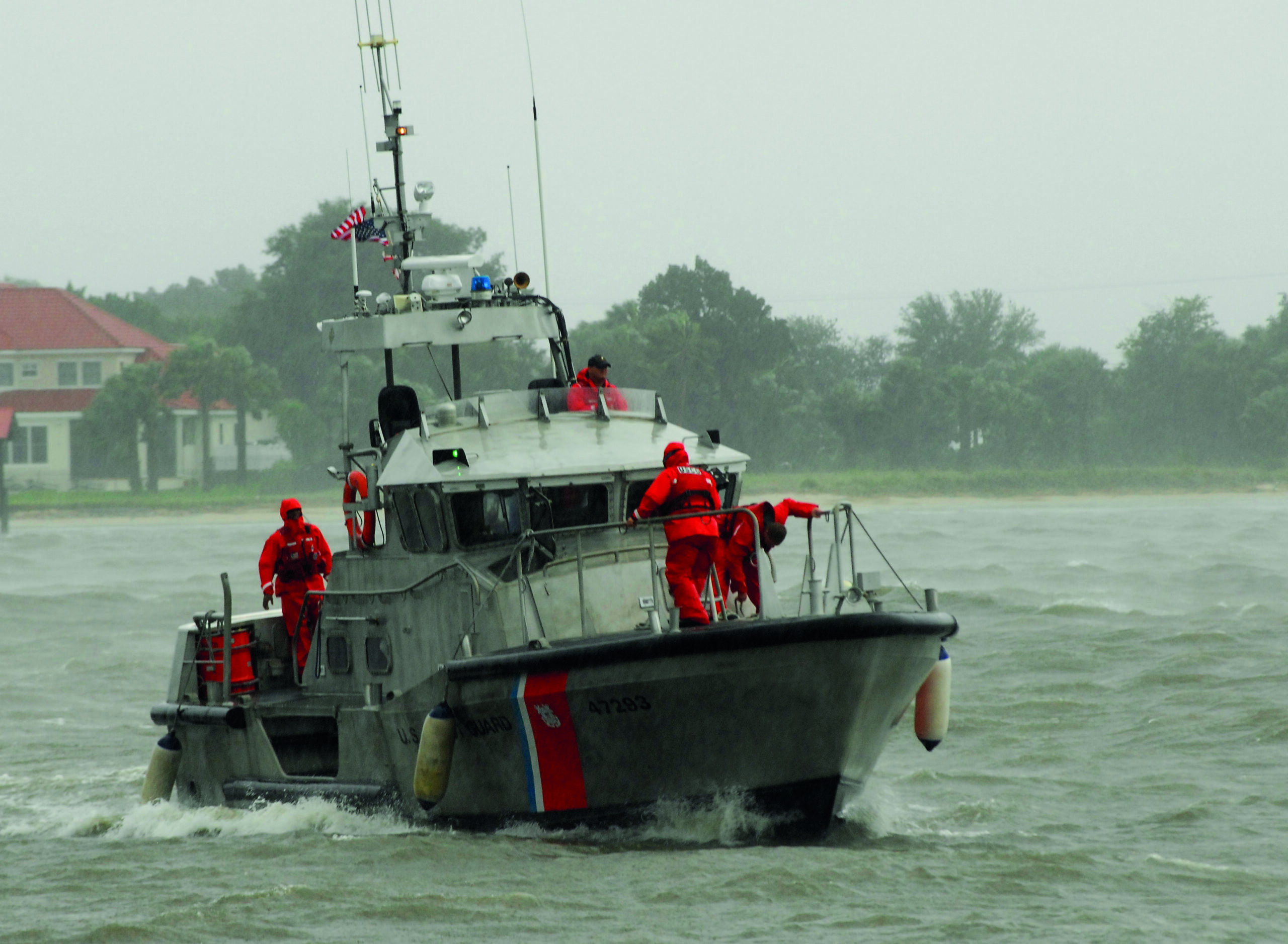
Coast guards can also benefit from the use of uncrewed vehicles. UAVs can monitor areas for potential illegal activity, maintaining wide-area coverage at a relatively low cost, and can approach suspect vessels to collect both imagery and electronic data. UAV-based imagery can also help in disaster response or the clean-up of oil spills. USVs could be used to help skim oil from those spills. They could also be used to protect physical infrastructure or key assets from attack: even an unarmed USV can physically interpose itself between the attacker and the target. UAVs and USVs can also be used in search and rescue: UAVs can locate missing people and drop inflatable devices, while USVs may be able to get on the scene faster than crewed vessels. The EMILY USV system has been used for that purpose for over a decade. [2]
Coast guards can also use UUVs to survey undersea infrastructure for damage after a storm, earthquake, or attack. Eventually, they may even be able to employ UUVs to assist with or perform repairs. While undersea infrastructure is not new – intercontinental cables have existed since the mid-nineteenth century – the volume of information moving via such cables has grown exponentially in recent decades, playing a critical role in the global economy. Undersea pipeline capacity is also growing rapidly and, like cables, pipelines are vulnerable to natural disasters, accidents, or attacks.
The advent of inexpensive satellites and fee-for-service usage of satellites can help coast guards with their missions. They can use satellite imagery to observe vessels and their behaviour, as well as important aspects of the physical environment. They can also employ satellite-based communications to improve reliability and bandwidth in remote regions where other types of communications may not function.
Increasing threats from cyberattacks are already impinging on the operations of coast guards. They need to protect their own systems, and some also have regulatory authority to oversee private companies’ cyber defences, thereby aiming to prevent or mitigate physical damage. Various other types of information technology, from ‘big data’ processing to enhanced human-machine interfaces, can enable coast guards to conduct their missions more effectively by being better able to characterise their operational environments and interact with them.
Other technologies that can benefit coast guards include advanced materials and additive manufacturing (3-D printing). Materials that are more corrosion-resistant, lighter, less expensive, or otherwise better can be used in various equipment and vehicles. Additive manufacturing can reduce logistical burdens: instead of a ship or a remote aircraft depot having to stock room-filling quantities of spare parts, it can store powder occupying a fraction of that volume and produce the parts on demand.
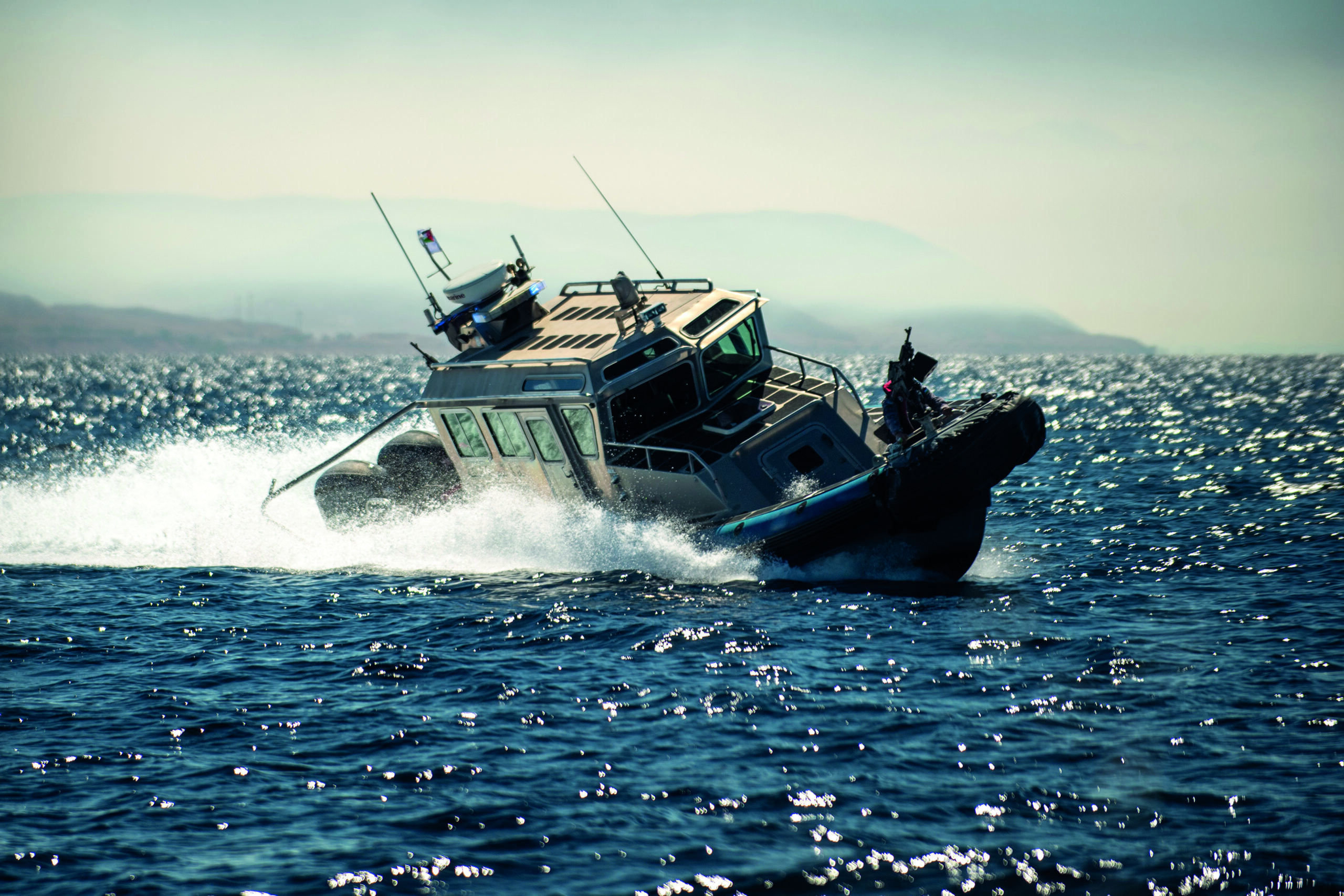
Changing Environmental Conditions
Climate change affects coast guards in a variety of ways. Their own infrastructure is subject to increased damage and flooding, requiring additional investments to protect, repair, or replace it. Extreme heat in some places can degrade human performance and damage equipment. At the same time, climate change will intensify demand for coast guard services. Flooding from increasingly frequent and severe storms increases demand for search and rescue from coastal communities. Maritime infrastructure designed for moderate temperatures and/or fresh water will degrade more rapidly if extreme heat causes parts of it to buckle or saltwater intrudes, so coast guards that regulate infrastructure may need to adjust required maintenance cycles and planned lifespans. Coast guards that oversee bridge designs to enable waterway traffic, or regulate the sizes of ships transiting under bridges, may find that rising waters elevate accident risks. While demand for some coast guards’ icebreaking efforts to enable winter traffic may be less necessary, increased calving of icebergs may elevate the risk to vessels transiting, for example, the North Atlantic. This will necessitate increased monitoring and, possibly, long-range rescues.
Illegal Fishing
Growing populations in many countries are becoming prosperous enough to want more animal protein, increasing demand for both wild-caught and farmed fish. At the same time, climate change, pollution, and overfishing have diminished – and continue to diminish – fish populations. This increases the temptation for domestic fishing vessels to violate regulations regarding where, when, how, and what they fish. Coast guards will need to be increasingly vigilant as they enforce rules about areas that are closed to fishing, legal types of nets, or which species or sizes of fish are permitted to be taken.
The depletion of fish stocks elsewhere will also contribute to growing rates of illegal, unreported, and unregulated (IUU) fishing by foreign vessels inside other nations’ exclusive economic zones, which can extend up to 370 km from shore. Monitoring and responding to fishing incursions at such distances can be challenging for any coast guard, but particularly for those of nations with small populations or economies, such as Pacific island states. While China’s fishing fleet has recently been the worst offender in terms of IUU fishing in other nations’ waters, fleets from a number of other countries do the same on a smaller scale.

The Evolving Maritime Movements of Drugs
Despite half a century of concerted efforts to counter consumption of illegal drugs, these substances are widely used around the globe, often far from their source countries. Maritime drug flows are continually adapting to shifts in supply, demand, and law-enforcement capabilities. For example, large-scale cocaine flows from South America through Africa to Europe are a relatively recent phenomenon, as are the trans-shipment of precursor chemicals and the increasing use of synthetic drug additives. While the maritime drug flows of the 2030s and beyond are unpredictable, coast guards will continue to battle against them; both sides may employ uncrewed vehicles and other emerging technologies to detect and monitor targets of interest. Other types of maritime smuggling – largely to evade tariffs or domestic taxes – will also continue.
Increasing Maritime Migration
While annual flows of maritime migrants are highly variable, the numbers of people migrating by sea are likely to rise in the next several decades. Swelling populations (especially of young people), instability, violence, and poverty in some nations are being matched by declining populations of young people in others, enhancing the economic opportunities associated with migration. The effects of climate change are likely to exacerbate the extent of migration, as hotter areas of the globe experience more extreme weather and less economic viability from agriculture or fisheries, further contributing to conflict. Paradoxically, moderate economic improvements in some sending countries may stimulate migration rather than decreasing it, as people become more capable of paying for long-distance travel. Family members who are already in developed nations can also fund migration through remittances, while both demonstrating that the journey is possible and increasing the attractiveness of arrival. However, developed nations are unlikely to want to permit the levels of immigration desired by migrants, even if such movements strengthen their own economies. The result is that substantial numbers of unauthorised migrants are likely to cross the Mediterranean, the English Channel, the Caribbean, and various Asian waters over the next few decades.
As we have seen in past mass migrant flows, many of the vessels involved in unauthorised migration are unseaworthy. The mix of people seeking opportunity and refuge aboard them may have a plethora of medical needs after long, dangerous transits. The result is that coast guards will need to rescue them, provide food, water, and medical care, then interview them regarding potential asylum claims. They will also need to cooperate with various authorities, often across multiple countries, to enable these individuals either to disembark or to be repatriated. Collectively, these efforts can be resource-intensive in terms of both personnel and ships.

Expanding Maritime and Coastal Activity
Increases in several types of maritime activity will likely lead to long-term growth in demand for coast guard search-and-rescue operations. Although the volume of maritime shipping has been variable over the last several years due to the pandemic and various trade restrictions, long-term volumes will likely grow alongside the global population and economy. Economic factors may shift some cargo ships to more treacherous routes. For example, some vessel owners have reduced timelines and fuel costs by transiting from Europe to Asia across the Arctic, rather than via the Suez Canal and Indian Ocean, despite risks due to ice and insufficient bathymetric charting. Similar dynamics are evident with respect to fishing vessels. The previously cited rise in demand for fish, even as fish populations decline, might well stimulate ship captains to operate at sea longer and in rougher conditions than they would formerly have tolerated.
Nearly 40% of the world’s growing population lives within 100 km of a coastline, and much of the rest lives within a short distance of large rivers or lakes. [3] These populations use the waters around them for sustenance, recreation, or both. Coast guards need to be prepared not only to rescue people on the water, but also those on the land who find themselves inundated by increasingly fierce storms. In developed countries, much of the population has limited physical mobility due to age, curtailing those individuals’ ability to extricate themselves or to cooperate effectively with their rescuers. For all of the above reasons, coast guards will need to expand their capacity for conducting search and rescue.
Continuing Terrorism, Piracy and Insurgency
After interventions in Somalia, Afghanistan, Iraq, the Sahel, and elsewhere, many nations are weary of fighting terrorists, pirates, or insurgents. Unfortunately, these threats are not going away. Maritime infrastructure and traffic still need to be protected from both domestic and international terrorists, with the domestic threat likely exacerbated by the intense political divisions and frustrations in many societies. Piracy persists along Africa’s East and West coasts, with coast guards and navies from developed nations deploying in response to it. While some insurgent groups with maritime capabilities have been quelled, such as the Revolutionary Armed Forces of Colombia (FARC), the Tamil Tigers of Sri Lanka, and the Free Aceh Movement in Indonesia, other such groups persist. Outside powers currently play limited roles in addressing those insurgencies, but coast guards may be ordered to deploy to help other nations to counter the threat they pose.

Elevated Geopolitical Tensions
The last year has witnessed a vast, destructive war in Ukraine, including a substantial maritime element that has affected Ukraine’s neighbours in the Black Sea. Russia has also attacked undersea infrastructure far from the conflict, damaging pipelines in the Baltic Sea. At the same time, nations feel increasingly compelled to choose sides in the growing confrontation between China and the United States. In response to geopolitical tensions and outright conflict, coast guards need to redouble their efforts to protect civilian targets from possible attack, as well as to respond to attacks that do occur. They also often need to support naval forces in time of war, protecting them from attacks in their homeports and, sometimes, overseas.
Decreasing Pools of Potential Recruits
All of the growing demand signals for coast guards that were described above will increasingly collide with intense constraints on the supply of personnel. While only a few nations’ populations are currently shrinking, most developed nations have declining cohorts of young people, and are aging rapidly. There are ever fewer people who can do the hard physical and mental work of operating at sea, some of which requires the personal courage and spirit of adventure that are most often found among the young. Potential pools of recruits are diminished by the increasing prevalence of obesity and asthma among the young, as well as widespread illegal drug use. Coast guards also need to find young people who want to serve. While older adults have been lamenting the state of their younger counterparts for millennia, many of today’s young people may not want to trade a comfortable view of the world through a screen for one that involves the hard work of being in a coast guard. Those with specialised technological and linguistic skills are in high demand in the private sector, making them particularly challenging and expensive to recruit.
One way in which coast guards can offset the shortage of potential recruits is to ensure that they reach out to populations that might have been previously underrepresented in their ranks, such as women or members of ethnic minorities. [4] There may also be cases in which technology can reduce the number of personnel needed. For example, autonomous uncrewed vehicles may require fewer personnel than their crewed counterparts, or advanced algorithms that periodically cue humans may obviate the need for individuals to continually monitor information streams.
Concluding Remarks
Coast guards around the globe face a tremendous confluence of challenges. Some are simply ongoing, such as drug-smuggling. Others are becoming increasingly dire, such as illegal fishing and migrant rescue. The need for search-and-rescue operations is likely to rise. So too will requirements to regulate and counter the use of new technologies, even as cohorts of potential recruits shrink. However, some of these same technologies may also help to diminish coast guards’ woes if they can be used effectively. By anticipating these challenges and finding ways to overcome them, coast guards around the globe can continue to protect both people at sea and the maritime environment.
Scott Savitz
Notes
1. See further: Savitz, Scott, Aaron C. Davenport, and Michelle D. Ziegler, The Marine Transportation System, Autonomous Technology, and Implications for the U.S. Coast Guard. Homeland Security Operational Analysis Center operated by the RAND Corporation, 2020. https://www.rand.org/pubs/perspectives/PE359.html
2. The EMILY website is at https://www.emilyrobot.com/
3. Factsheet: People and Oceans, The Ocean Conference, United Nations, New York, 5-9 June 2017, https://www.un.org/sustainabledevelopment/wp-content/uploads/2017/05/Ocean-fact-sheet-package.pdf
4. Lim, Nelson, Kimberly Curry Hall, Kirsten M. Keller, David Schulker, Louis T. Mariano, Miriam Matthews, Lisa Saum-Manning, Devon Hill, Brandon Crosby, Leslie Adrienne Payne, Linda Cottrell, and Clara A. Aranibar, Improving the Representation of Women and Racial/Ethnic Minorities Among U.S. Coast Guard Active-Duty Members. Homeland Security Operational Analysis Center operated by the RAND Corporation, 2021. https://www.rand.org/pubs/research_reports/RRA362-2.html






